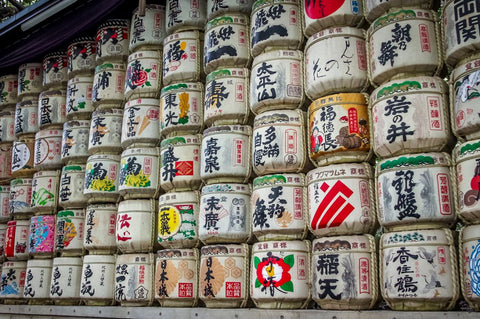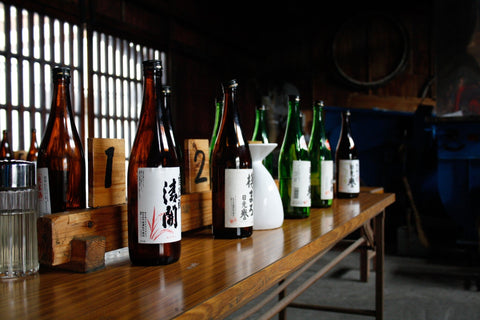How do you tell if you’re drinking good sake?
- How it’s prepared
- Its alcohol content
- Its recommended serving temperature
- How it tastes
Despite its mouthwatering taste, fascinating culture, and rising popularity, sake is an enigmatic topic for many.
This makes it tricky for newbies to get into. The problem isn’t where to get it — you can get it from restaurants, alcohol shops, and even convenience stores. But since it’s coming from so many places, the biggest challenge to drinking sake is if telling the quality is good or bad — or if the drink is even really sake.
So, how do you evaluate that bottle of sake in your hands? Read our guide on how to tell you're drinking good sake to find out how.
That said, it’s important to note that there’s no definitive measure — but there are a few key details to look for to find a quality bottle:
With sake's growing popularity, it’s important to know how to pick the best bottle for a memorable experience. As we count down to Sake Manila 2025, join us in exploring the key factors that define good sake, from preparation methods to taste, and get ready for an exciting journey into the world of premium sake.
How it’s prepared

The first thing to look at is how the sake was prepared. If you’re somewhat familiar with the process, or if this isn’t your first bottle of sake, then you might know that there are different kinds of sake. Each one is prepared using different ingredients and methods, which, of course, affect the quality and taste of the alcohol.
Therefore, you must know what these kinds of sake are, so you more or less know what to expect when you drink it.
The process that all true sakes undergo is rice polishing. This is when the rice is polished, or milled, to remove its outer layer. This removes the oils and proteins of the rice and leaves behind a starchy core.
The more the rice is milled, the higher quality it is considered to be. So, good sake is often considered to be within the 50% to 70% polish rating. This means about 30% to 50% of the original rice was milled and polished off.
The extent of polishing affects many things, including taste, texture, aroma, and finish. We’ve covered it in previous posts, and we’ll also give a brief overview of that later on.
Its alcohol content
The next is alcohol content. Like with any kind of drink, the amount of alcohol it contains will affect your drinking experience. Sake is meant to be sipped throughout a meal or recreationally with a group. So, you must find one that’s not too high in alcohol percentage.
Sake generally should contain 15% to 17% alcohol. Some sake may contain 20% before bottling. This is typically what happens with undiluted sake, or sake that’s been reinforced.
It’s unlikely you’ll find a type of sake way out of its alcohol content range, but these are the ranges to keep in mind to find one that suits your tastes.
Its recommended serving temperature

One of the biggest debates when it comes to drinking sake is the temperature it should be served at — chilled or warmed. Certain sake and sake types often come with prescribed serving temperatures, which they know to bring out the best of the flavor, aroma, and texture of the sake.
While the decision is ultimately up to the drinker, it’s important to know how temperature affects the experience of drinking that specific sake.
Finer sake made from highly polished rice tends to do best when chilled. This is because this kind of sake often has fine and subtle flavors and aromas. If this is exposed to heat, it causes the sake to lose those important notes. You essentially lose out on what makes it a great sake in the first place.
Cheaper sake is often served warm. This is because the heat has a similar effect on this kind of sake. But, instead of losing out on the refined taste, heat is needed to smooth out the harsher notes. Thus, making it more pleasant to drink.
So, pay attention to the serving temperature that is recommended for the sake you’re picking. A general rule of thumb is that higher-quality sake is served cold, while lower-quality sake is served warm.
How it tastes
Last, but not least, consider how the sake tastes. The many types of sake, such as Junmai, Daiginjo, Honjozo, Nigori, and more have varying profiles.
Take, for example, Junmai and Daiginjo sake. Junmais like our Tatsuriki Junmai Green Dragon contain at least 70% polished rice. This creates a rich, full-bodied drink with a slightly acidic profile. Daiginjo sake like the Kozaemon Junmai Daiginjo 40, on the other hand, is made from grains polished down to 50%. Thus, it has a more delicate taste, strong floral aroma, and a full body.
Likewise, sake also can be dry or sweet. This is based on the Sake Meter Value or SMV. This is a sort of grading system that shows the sugar-to-acid level in each bottle. Lower values (like an SMV of -2) indicate a sweet sake, while higher values (like an SMV of +5) are for dry sake.
As you can see, the type of sake dictates, more or less, what kind of flavors and aromas you can expect from the sake. That said, to each their own — what you may consider great tasting sake is completely up to you! The best way to get a good handle as to what is both high-quality and delicious sake for you is to try several different types of sake for yourself.
Key Takeaway
Our guide on how to tell if you're drinking good sake shows that certain types of sake just rank higher than others in terms of quality. That said, which sake will create a great drinking experience is totally up to you, so we encourage you to experiment! Take a look at Ralph’s Wines & Spirits' full sake collection here. We carry a variety of Junmai, Junmai Daiginjo, and more — all from the best breweries in Japan.
Author's Note: This entry was optimized by the best SEO Services Agency in the Philippines - SEO Hacker



